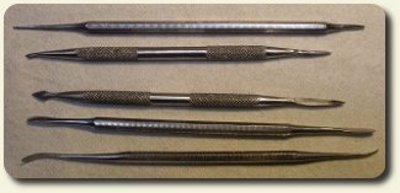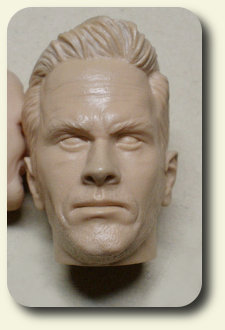
December 2010, Issue 11
Tools
Page 83
 For toy sculptors, wax was introduced in the sixties but did not catch on big until the late seventies and eighties. Epoxy putty had a strong foothold with veteran sculptors who did not like to change their experienced ways. As silicone mold mixtures became more advanced and the molding process itself became easier, wax found its way into mainstream toy sculpting. New advocates found this to be easier and cleaner to use with its superior detail holding ability.
For toy sculptors, wax was introduced in the sixties but did not catch on big until the late seventies and eighties. Epoxy putty had a strong foothold with veteran sculptors who did not like to change their experienced ways. As silicone mold mixtures became more advanced and the molding process itself became easier, wax found its way into mainstream toy sculpting. New advocates found this to be easier and cleaner to use with its superior detail holding ability.

Today there are not many artists in the toy world who do not sculpt with wax. I sculpted for Hasbro© Toys Inc., as well as many other smaller toy companies, for nearly a decade with wax. The wax I refer to though, is not the typical wax one would use to make a candle, or the bee's wax that many pewter artists work in. No, the wax I refer to is a formulated wax that has to be made by combining different types of wax and talc together in a mixture known as toy wax.
Formulated wax uses the properties of different waxes with talc as a thickener to create a hard wax that is supple instead of brittle, with a smooth surface texture neither sticky nor soft and resistant to ambient room temperatures. With this wax you can create a sculpture with intricate details as a porcelain doll
face with a finish as smooth as glass. Fingerprints are a thing of the past with wax, as they can be rubbed away with a simple loop tool, and then burnished so that no single tool mark is left behind.
Custom Dolls, Houses & Miniatures / CDHM







